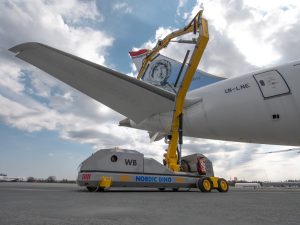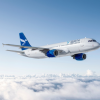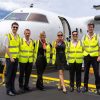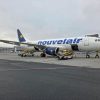 Anyone with even the slightest experience of cars, especially older cars, knows that corrosion can mark the demise of a vehicle’s lifecycle. Rust on the body or panels will undermine its structural integrity, and will undoubtedly affect the car’s performance. Now, apply this to aircraft, which can also suffer from corrosion (they share similar materials, after all). If you do not maintain an aircraft’s exterior, it too will corrode. And this corrosion can affect not only the airframe, but also the plane’s avionics. It can degrade components, increase maintenance costs if left unchecked, and ultimately possibly lead to catastrophic failures. As Veronika Andrianovaite, CCO of Nordic Dino Robotics, explains:
Anyone with even the slightest experience of cars, especially older cars, knows that corrosion can mark the demise of a vehicle’s lifecycle. Rust on the body or panels will undermine its structural integrity, and will undoubtedly affect the car’s performance. Now, apply this to aircraft, which can also suffer from corrosion (they share similar materials, after all). If you do not maintain an aircraft’s exterior, it too will corrode. And this corrosion can affect not only the airframe, but also the plane’s avionics. It can degrade components, increase maintenance costs if left unchecked, and ultimately possibly lead to catastrophic failures. As Veronika Andrianovaite, CCO of Nordic Dino Robotics, explains:
“That’s why it’s essential to stay on top of maintenance and prevent corrosion from developing. After all, it’s our priority to ensure that aircraft remain as safe and reliable as possible. In our industry, the only standard that needs to be followed when it comes to airworthiness is excellence.”
The causes and types of aircraft corrosion
When certain metals come into contact with water and oxygen, a natural oxidation process begins wherein such refined metals are converted into more stable compounds like oxides or hydroxides. This process, which is relentless, can fundamentally threaten durability and airworthiness. As Ms. Andrianovaite illustrates:
“During Nordic winters, airports regularly use de-icing fluids and salt to keep runways operational. While these substances protect against dangerous ice, they create other risks. The same salt that leaves a white residue on cars also attacks paint, eventually exposing metal to air and moisture. Over time, this leads to significant corrosion on vehicles. Aircraft face similar challenges, particularly when based near coastal areas where salt exposure is constant.”
Further complicating matters is the fact that there are different types of corrosion that can impact an aircraft. It is important to understand that there are lots of types of corrosion that can attack the aircraft in different ways. For example, galvanic corrosion, which happens when you have different types of metal coming in electrical contact in the presence of an electrolyte like salt water. This is more common on mixed metal assemblies.
As Ms. Andrianovaite continues:
“Then there’s pitting corrosion, where localised corrosion creates little cavities in the surface of the material. You’ll see this when aluminium alloys are exposed to chloride. Then, in those places where there’s confined spaces, like joints, the collection of stagnant moisture can lead to crevice corrosion. Meanwhile, wear and corrosion can occur at those points where there’s repeated mechanical motion. The term for this is fretting corrosion. I don’t think it needs saying, but an aircraft is a complex mechanical system, which means you need to be extra vigilant.”
Combatting corrosion: having a proactive strategy is key
As was noted earlier, the process of corrosion is relentless. Once it has started, its onset can be fast and destructive. Ms. Andrianovaite has an anecdote from one of Nordic Dino’s clients that acts as a shocking illustration of this: “One of our customers told us a story involving the transportation of salted fish. The freight was always placed in the luggage compartment which after 6 months due to the salty nature of the product became corroded and caused damage to the aircraft structure. I was surprised to see how much damage can be done in such a short amount of time. It once again showed the importance of corrosion-preventive measures.”
What corrosion-preventive measures are there?
Veronika explains: “So, my first piece of advice is to be aware of the places on an aircraft that are most susceptible to corrosion. Fuselage and Skin Panels, Wing and Tail Surfaces, Landing Gear, Engine Components, and Fasteners and Connection Points, these all need to be regularly checked. But the reality is that there is no other real way to protect your aircraft from corrosion than washing it regularly.”
She continues, “Boeing, for example, recommends that crack and corrosion inspections should be performed every quarter, and this is the time that most airlines will typically schedule aircraft washing so that they can minimise cleaning expenditure. This approach might appear cost-effective initially, but by scheduling washing so infrequently, you are opening yourself up to the possibility of corrosion developing. And once that happens, you’ll be looking at more downtime, and even service disruptions.”
According to Ms. Andrianovaite, airlines are becoming increasingly aware of these issues. Thankfully, instead of having to invest in specialized training and equipment, it is now possible to deploy skilled technicians to client locations where they can perform comprehensive cleaning services. With the help of robotic cleaning solutions, the resources that previously could allow only 1 wash, allow 2 or 3 for the same amount of work and washing solutions.





